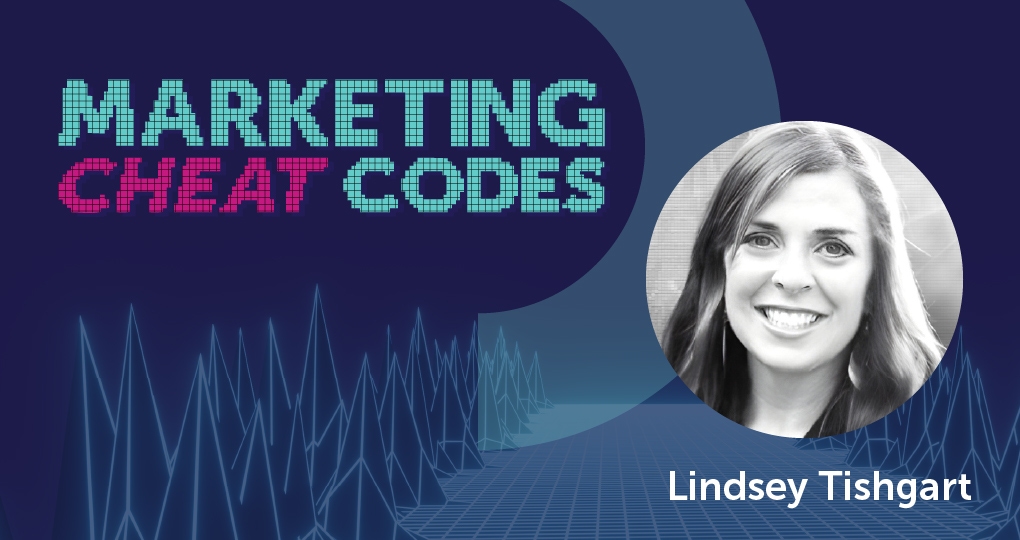If you?ve ever helped create a brand from scratch, you know it’s no easy task. There’s audience mapping, storytelling, stakeholders, and their emotions. Imagine dealing with all of that, then getting hit with an acquisition ? or five. Lindsey Tishgart, SVP of Marketing at Mediafly, has lived and survived it. Read on to hear her cheat codes for building a bulletproof branding framework and how to tell if it’s time for a brand evolution.
7:27 – Cheat Code #1 – Start with the story
Before diving into your presentation, first thing’s first ? take time to nail your brand story and be prepared to tell it in multiple ways, to multiple audiences.
It really boils down to: What’s the story you’re trying to tell? And then how do you tell it in different ways so that it’s meaningful to the person you’re trying to connect with. That’s the piece that I tend to spend a lot of time on.
It’s not just about throwing together a PowerPoint. If that’s what you’re starting with, then you’re going to be in trouble. You need to go back and write the story. And if somebody could tell it without slides, how would they present it? The good old elevator pitch. It’s a great way to start, but really, it should fill a whole conversation. It should draw people in, so they get little bits and then eventually want to hear more.
8:56 – Cheat Code #2 – Remove unnecessary friction
Cut out any possible confusion by anticipating questions from your buyers, prospects, customers, employees, partners, investors, and the community.
We recently brought together a number of acquisitions. With some, the product names hadn’t changed. This created unnecessary friction for the buyer. There were situations where the buyer would come in and say, ?Well, wait, I?m already signing a scope of work with you; am I signing a separate one for this other component??
How do your buyers and customers recognize that this is a single platform, all connected, when the names don’t make sense together? The first step is assessing your audience. You’ve got employees, prospects, customers, the community, partners, plus investors ? and you times that by two. You have that for the acquirer and the company that’s being acquired. Each of those needs a slightly different message.
Think about the current customers. Their concerns are: ?Is my login going to change? Is the product experience going to change? Am I still going to be able to get the data or services that I’ve paid for? Yes, that’s great that you told me down the road about this integration, this road map, and opportunity to either get more or buy more, but what does this mean for me today and tomorrow??
Same thing with the employees. They’re wondering: ?Is my boss changing? Are my benefits changing? What is this company? What is the experience like? I went to Glassdoor and saw raving reviews. That’s great, but what does this mean for me? Are my direct reports still the same? How does this affect my day-to-day??
16:34 – Cheat Code #3 – Create a tech stack roadmap
Work closely with your entire team to tie together your systems technology infrastructure. This will ensure all of your data is integrated seamlessly.
What enablement needs to happen? And that’s from the SDR’s, the AE’s, sales team, and the customer success team. Then we go in and look at websites. What do we want to do to tie these together? Are the marketing automation systems connected? Did you just acquire somebody with HubSpot and you have Marketo? How are you going to tie various CRM instances? You’ve got this tech stack roadmap that you have to tie together, too.
Dirty data can derail a lot. From a brand standpoint, you want to say, ?Oh, this is not my job; this is somebody else’s.? But, with any type of acquisition, you need to work together to understand where each of these customers or prospects came from, because if they’re used to getting an email from Company A, Company A is now part of Company B.
When you go to send that mass marketing automation email, and it comes from Company B, they’re not aware. Then they click the unsubscribe list and all of a sudden your unsubscribe rates go way up, because they don’t recognize the brand.
19:47 – Cheat Code #4 – Listen to your customers
Get out of the echo chamber by asking your customers what they think your brand value and messaging is, as opposed to just your founders.
What are the customers saying? That’s one of my favorite things to do ? interview their customers and ask them, ?Hey, if you were going to describe this solution, how would you describe it to your peers?? Then explain that these two companies came together and here’s the value that X brings. Ask them, ?How do you see that fitting in??
Talking to your ICP and the audience is going to get you out of the echo chamber. Listen to what people think the message is and go hear it straight from the people you want to sell to.
21:57 – Cheat Code #5 – Align on a game plan
Get your entire team aligned on where your brand is now, where you want to go, and what the market is telling you. This will help drive a positive outcome.
Consensus-driven cultures struggle to execute. They spend too much time discussing. There has to be alignment on looking at this objectively in terms of where we are today, where we want to go, and what the market is telling us.
Then, somebody needs to make that decision and everybody has to be on board. It’s hard for a founder to give up their company and control. And some of them design the logo themselves. You have to go back to them and say, ‘This logo got you to where you are, but if we’re going to build this company and take it from X in ARR to Y, then you?ve got to trust me on this.?
Those conversations can be hard, but the sooner you have them, as long as they’re done with respect, you set the whole process on the right path.
24:12 – Lindsey on brand evolution and timing
How do you know when it’s time to invest in a rebrand? Lindsey recommends listening closely to your customers and keeping a watchful eye on the market.
You need to backtrack and see what the market is doing. In some cases, we’ve watched competitors make very similar acquisitions to what we made. That is signaling that the market is looking for this. There’s consolidation happening, and it’s an opportunity to say, ?Yes, this is strong.?
Also, carefully craft your response to customers who say, ?Yes, I bought this, but now I really want to hear more about your other solution.? Instead of telling them that the solution is called Y, say, ?We’re coming at you with this new, integrated brand experience, and we want you to share and grow with us.? Ultimately, you want to simplify for everybody and for all to speak the same language.
Want more marketing cheat codes? Sign up for the latest episodes ? and never miss out again.



